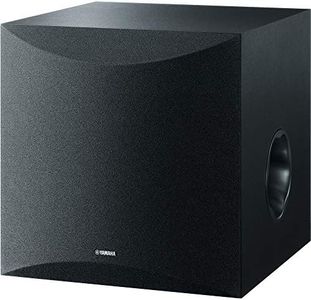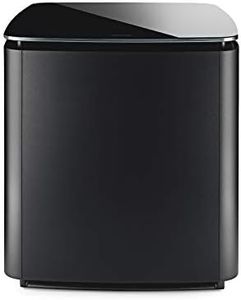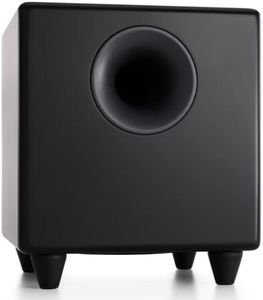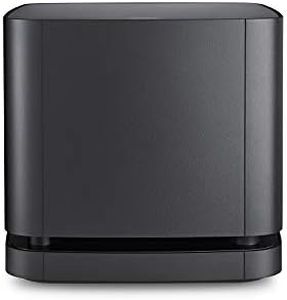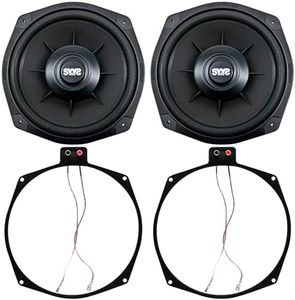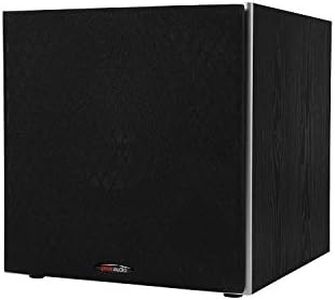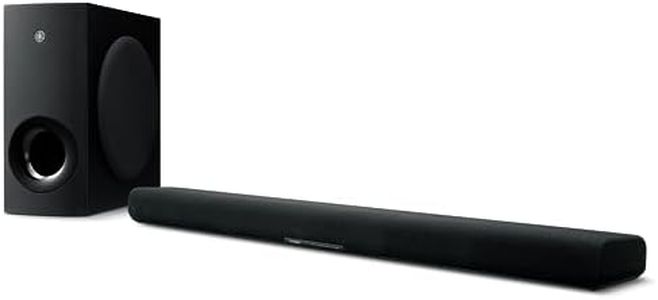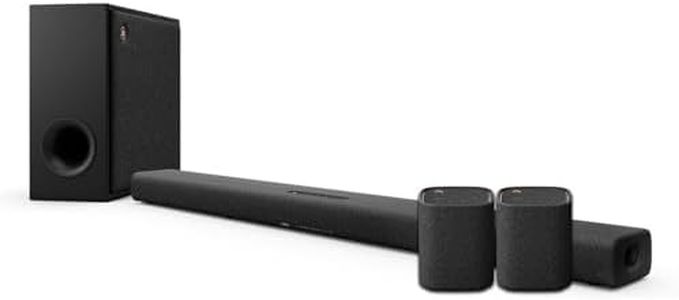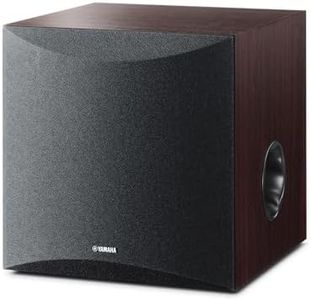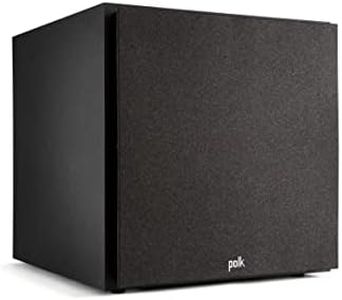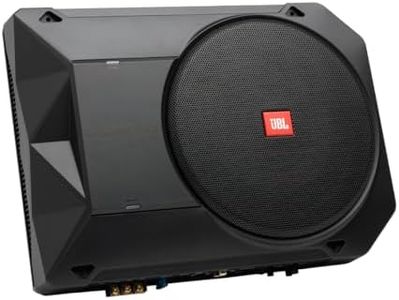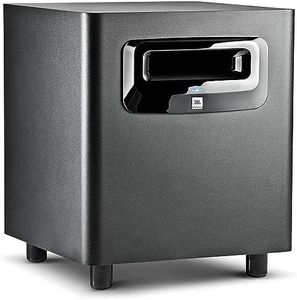We Use CookiesWe use cookies to enhance the security, performance,
functionality and for analytical and promotional activities. By continuing to browse this site you
are agreeing to our privacy policy
10 Best Subwoofers
From leading brands and best sellers available on the web.Buying Guide for the Best Subwoofers
When choosing a subwoofer, it’s all about finding the right balance between deep bass, sound quality, and suitability for your space and listening needs. Subwoofers come in many shapes and sizes, each offering different experiences—some shake your room with earth-rumbling bass, while others provide more precise and tight low-end support. Consider where you’ll place the subwoofer, what type of content you enjoy (movies, music, gaming), and how much space you have. Understanding a few key specifications will help you confidently select a subwoofer that enhances your sound experience without overwhelming (or underwhelming) you.Driver Size (Woofer Size)The driver size refers to the diameter of the speaker (usually in inches or centimeters) that produces the bass sounds. Larger drivers can typically move more air, which means they can produce deeper and louder bass, but they also take up more space and may not be as precise. Common sizes include 8-inch, 10-inch, 12-inch, and 15-inch. If you’re in a small room or want tight, controlled bass for music, a smaller driver might be better. For large rooms or a home theater where you want deep, thunderous bass for movies, a larger driver may be more satisfying.
Power Output (Wattage/RMS)Power output tells you how much energy the subwoofer can use to move its driver and create sound, measured in watts (often listed as ‘RMS’ for continuous power). A higher wattage generally means the subwoofer can play louder and handle more dynamic sound without distortion, but extremely high wattage isn’t necessary for every situation. For quiet, personal listening, lower wattage may suffice, while for large rooms and more impactful sound, more wattage (200W RMS or above) can help. Match the subwoofer’s power to your room size and listening habits to avoid overpowering (or underwhelming) your space.
Frequency ResponseFrequency response shows how low and high the subwoofer can go, usually expressed in Hertz (Hz)—for example, 20Hz–200Hz. The lower the first number, the deeper the subwoofer can play, which adds to that visceral feeling of bass. However, human hearing generally bottoms out around 20Hz, so most people only need their subwoofer to reach somewhere close to that. If you want to experience the deepest rumbles in movies or certain music genres, look for subwoofers with lower frequency limits; otherwise, a slightly higher starting point is usually enough for more casual listening.
Enclosure Type (Sealed vs. Ported)Enclosure type refers to the design of the subwoofer’s box, which greatly affects the sound. Sealed (closed) enclosures provide tighter, more accurate bass but might not go as loud or deep. Ported (vented) enclosures can deliver louder and deeper bass because of the added air movement from the port but might sacrifice some precision. If you listen to music and value clarity and speed, a sealed subwoofer might suit you better. For impactful action movies or if you want that really ‘boomy’ theater effect, a ported box is a strong choice.
Connectivity (Inputs and Controls)Connectivity covers the ways you can hook up your subwoofer to your system—options include line-level (RCA), speaker level, wireless, and sometimes digital connections. Some subwoofers also offer adjustable controls for volume, crossover frequency, and phase to help blend the subwoofer with your other speakers. Make sure your subwoofer matches your current receiver or amplifier’s outputs. If you like tweaking your sound or plan to move your subwoofer often, look for models with more adjustment options and flexible input choices.
Physical Size and Placement FlexibilityThe physical size impacts where you can place the subwoofer in your room. Subwoofers can be quite large and heavy, especially with bigger drivers and more powerful amps. Make sure you have enough space to place the subwoofer where it sounds best (often a corner or near a wall), without it being in the way. If space is tight, look for compact subwoofers or models designed to fit under furniture. Consider your room layout and aesthetic preferences to pick something that won’t disrupt your living space.
